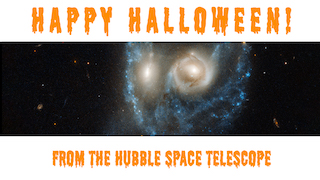Stuck In Neverland
Like the storybook character Peter Pan, Saturn's moon Phoebe may have a serious case of arrested development. One of 62 moons orbiting the ringed planet, Phoebe has some traits of what's called a planetesimal, a planetary building block. A team including NASA scientists took data from the Cassini spacecraft orbiting Saturn and plugged it into a model of Phoebe's chemistry, geology and geophysics to learn more about this intriguing object. They found that the moon most likely evolved actively for a time after it formed. This is unlike most asteroids and comets, which haven't changed much since the solar system's formation about 4.5 billion years ago. Scientists think that if Phoebe was born early enough in the solar system's history, its gravity could have pulled in radioactive material that would have produced enough heat to warm the interior and reshape the moon. Watch the video to learn more about Phoebe's lifetime.

A moon of Saturn appears to be a planet that never grew up.
Explore how Phoebe was born like a planet but ended up as a moon of Saturn.

Cassini imaging reveals that Phoebe has a nearly spherical shape despite being heavily cratered. Each image represents a 90-degree turn.

A model of Phoebe's shape made with Cassini data shows a 10-mile range between the lowest (blue) and highest (red) elevations.

Phoebe resembles a sideways skull in the left image. On the right, bright rays from a crater suggest Phoebe has lighter material beneath.

A close-up of Phoebe's south pole: Brighter areas are likely ice exposed by small craters; the largest craters are more than 2.5 miles deep.
Credits
Please give credit for this item to:
Science@NASA and NASA's Goddard Space Flight Center
Phoebe images courtesy of NASA/JPL-Caltech/Space Science Institute
Cassini image courtesy of NASA/JPL-Caltech/SSI/Cornel
-
Writer
- William Steigerwald (NASA/GSFC)
Release date
This page was originally published on Thursday, August 30, 2012.
This page was last updated on Wednesday, May 3, 2023 at 1:52 PM EDT.
